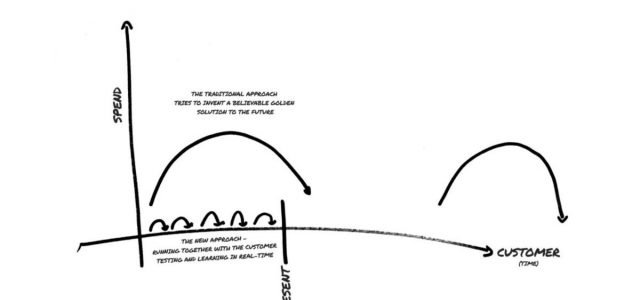Over the last years, technology development has exponentially grown. Additional functionalities have been developed and introduced, and more-and-more automation has entered the workplace to allow employees to focus on value-add activities to meet the organisation’s business goals. To support this technology growth, all non-technology areas require adjustments to allow full use of these technology advances.
However, many organisations are still embarking on traditional business transformations through the use of multi-module, on-premise ERP solutions. And, although ERP vendors are introducing SaaS solutions and customisation instead of configuration, many large IT consultancy organisations still work with multinationals to implement heavy configured, on-premise ERP systems through traditional phased, time-consuming implementation processes, as shown below:
- Analyse (1-2 months): assessment, scoping, etc.
- Design (2-3 months): process mapping with design freeze
- Develop (3-4 months): development through black-box approach
- Build (3-4 months): technical and business process configuration
- Deploy (2-3 months): Technical, Integration and User Acceptance Testing
- Go-Live (1-2 months): User Training, Hypercare/ Post Go-Live support
This means that from the Design (“design freeze”) until Go-Live the business and technology improvements are frozen for approx. 10 months, while the business landscape, other technologies, business decisions and innovations continue to evolve. This delay has resulted in misaligned business expectations of the benefits of these large transformations, due to:
- The “new” technology doesn’t fit fully with the evolving business practices
- The ERP configuration restricts upgrades, seamless integration, etc.
- The transformation has also changed existing business “excellence” that already existed in the organisation and/ or provided a competitive edge
- The program team’s decisions (incl. developers, testers, business users, etc) during develop and build phases are not fully supported by the wider organisation
To ensure capitalisation on the investment, many organisations define follow-up projects and initiatives to reduce the gap between the program decisions and the expectations of the wider organisational teams, which is costly and further ties up key business and IT resources.
To avoid these challenges, a number of organisations are investigating and introducing these technology-based methodologies in the non-technical environment. Recently, agile-based transformations, using lean and scrum methodologies, have been introduced outside the pure technology environment to break down these traditional silos. Introducing a transformation journey with close collaboration of cross-functional teams that have dual roles (day-to-day and improvement roles) has been proven far more effective then creating two separate organisational teams (program team and a business-as-usual team) to transform your business.
Agile-based transformations, which merge operational, improvement, business and technology roles into single roles, show unique business excellence, which embraces more effective collaborative change to deliver short and long-term business results…
Article by channel:
Everything you need to know about Digital Transformation
The best articles, news and events direct to your inbox






